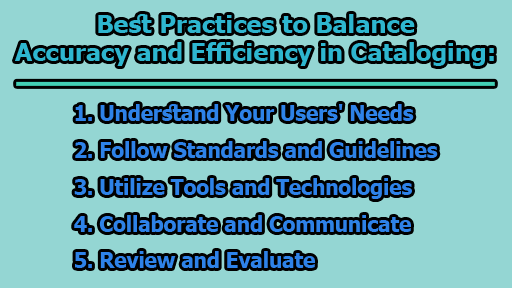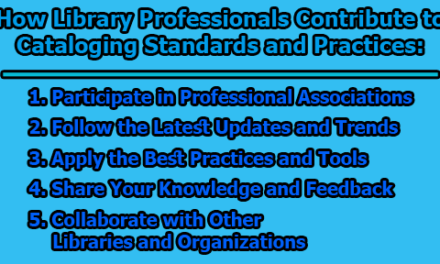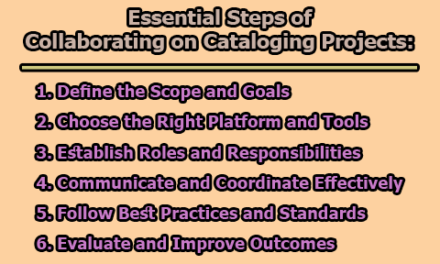Best Practices to Balance Accuracy and Efficiency in Cataloging:
Cataloging is an indispensable process in library services, serving as the bridge that connects users to the information they seek. It enables library patrons to access resources efficiently and effectively. Nevertheless, cataloging is a complex task fraught with challenges, ranging from dealing with various formats, languages, and metadata schemes to maintaining consistency and adhering to established standards. The challenge for librarians and catalogers is to balance accuracy and efficiency without compromising quality and productivity. In this article, we will explore some of the best practices to balance accuracy and efficiency in cataloging.
1. Understand Your Users’ Needs: The first step in balancing accuracy and efficiency in cataloging is gaining a deep understanding of your users’ needs and expectations. It’s vital to know what type of information they are searching for, how they conduct their searches, and the level of detail and consistency they require in catalog records. By comprehending your users’ needs, you can prioritize the most relevant aspects of cataloging, saving time and resources that might otherwise be wasted on unnecessary or redundant tasks.
2. Follow Standards and Guidelines: Another crucial aspect of cataloging is adhering to the relevant standards and guidelines that apply to your library and collection. Standards such as Resource Description and Access (RDA), Library of Congress Subject Headings (LCSH), and MARC 21 formats provide a common framework and vocabulary for cataloging, ensuring interoperability and compatibility across different systems and libraries. Compliance with these standards guarantees the quality and reliability of catalog records while reducing errors and inconsistencies that may negatively impact users’ experiences.
3. Utilize Tools and Technologies: In the modern library environment, catalogers can harness the power of various tools and technologies to streamline their work and enhance both accuracy and efficiency. Cataloging software, online databases, barcode scanners, and optical character recognition (OCR) are just a few examples. These tools enable catalogers to create, edit, import, export, and manage catalog records more swiftly and easily. By embracing technology, catalogers can save time and focus on more complex and creative aspects of cataloging, such as authority control, subject analysis, and classification.
4. Collaborate and Communicate: Collaboration and communication with colleagues and other library professionals are essential for achieving cataloging excellence. Sharing best practices, exchanging feedback, participating in training programs, and joining professional associations can help catalogers improve their skills, knowledge, and performance. Through collaboration and communication, catalogers can learn from the experiences of others, solve problems, discover new resources, and stay updated on the latest trends and developments in cataloging. This sense of community and shared knowledge enhances overall efficiency.
5. Review and Evaluate: Regularly reviewing and evaluating your cataloging work is the final suggestion for maintaining the balance between accuracy and efficiency. This practice involves checking catalog records for errors, updating them when necessary, and measuring productivity and quality. Review and evaluation help catalogers identify strengths and weaknesses in their processes, enabling them to make necessary adjustments and improvements. By periodically reviewing and evaluating their work, catalogers can ensure that their cataloging meets established standards and user needs, ultimately achieving their goals and objectives.
In conclusion, cataloging in libraries is a multifaceted process that requires a careful balance between accuracy and efficiency. Understanding users’ needs, following standards and guidelines, utilizing tools and technologies, collaborating and communicating with peers, and conducting regular reviews and evaluations are essential practices for catalogers striving to provide high-quality, efficient cataloging services. By implementing these tips and best practices, libraries can enhance user experiences and maintain the relevance and importance of their collections in the digital age. Balancing accuracy and efficiency in cataloging is a dynamic and ongoing process that continues to evolve as libraries adapt to the changing information landscape.

Former Student at Rajshahi University










